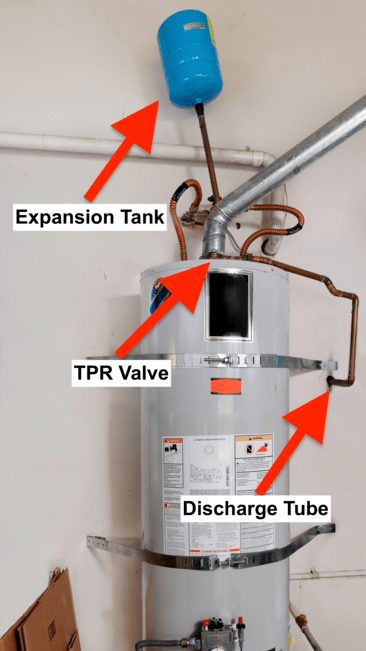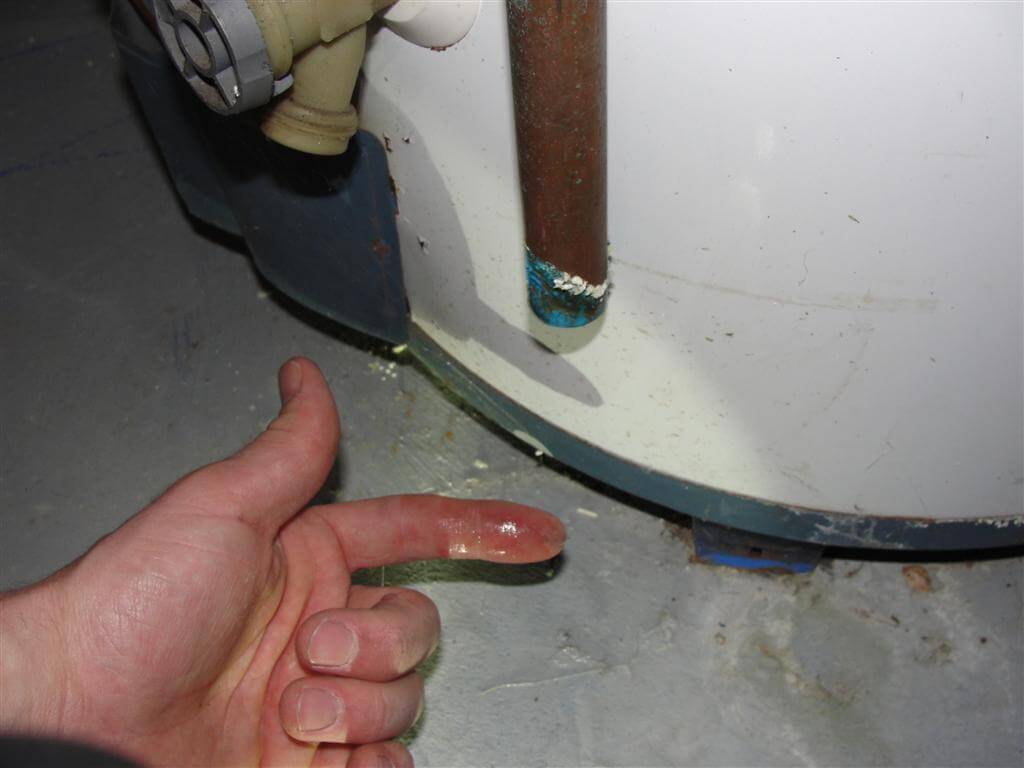A leaking pressure relief valve on a new water heater indicates a problem with excess pressure. It may require immediate inspection or replacement.
Water heaters are essential for comfortable living, providing hot water for daily needs. A pressure relief valve plays a critical role in maintaining safe operation. This valve prevents excessive pressure buildup, which can lead to dangerous situations. If you notice water leaking from the valve shortly after installation, it’s important to address the issue promptly.
Ignoring it can lead to more severe problems, such as water damage or heater failure. Understanding the causes of this leak can help homeowners take appropriate action and ensure their water heater operates safely and efficiently. Regular maintenance is key to preventing future issues.
Page Contents
Introduction To Pressure Relief Valve Leaks
A pressure relief valve is vital for water heater safety. It prevents pressure buildup. When pressure exceeds safe limits, the valve opens. This keeps the system safe and functional.
Common signs of a leaking valve include water pooling around the heater. You might also notice rust or corrosion on the valve. Strange noises from the heater can indicate a problem. If the valve drips continuously, it may need replacement.
Regular checks can help catch leaks early. Always consult a professional for repairs. Keeping the valve in good condition ensures safety and efficiency.

Credit: waypointinspection.com
Assessing The Leak
Identifying the source of a leak is crucial for safety. First, check the pressure relief valve. This valve is often located on the top or side of the water heater. Look for water dripping or moisture around it. If you see signs of leakage, the valve might need to be replaced.
Inspect the pipes connected to the valve. Loose or damaged connections can also cause leaks. If everything appears tight, the valve itself may be faulty. Rust or corrosion on the valve indicates it’s time for a replacement.
Calling a professional is essential if the problem persists. They have the tools and expertise to fix the issue safely. Never ignore a leaking valve as it can lead to water damage or more severe problems.
Causes Of Pressure Relief Valve Leaking
Several factors can cause a pressure relief valve to leak on a new water heater.
Excessive pressure in the system can lead to leaks. This happens when the water temperature is too high.
A faulty valve mechanism may also cause leaks. Sometimes, the valve does not seal properly due to defects.
Installation errors can result in leaks. Incorrectly fitting the valve or using the wrong size can create issues.
Quick Fixes For A Leaking Valve
Testing the valve is essential. Check for visible leaks around the valve. Use a bucket to catch any water. If water drips, the valve may need attention.
Adjusting water pressure can help stop leaks. Use a pressure gauge to check the pressure. Recommended pressure is between 40-60 psi. If it’s too high, adjust the water pressure regulator.
Replacing the valve might be necessary. Turn off the water heater before starting. Drain some water from the tank. Remove the old valve carefully. Install a new valve tightly to prevent leaks. Always use the right tools for the job.
Preventive Measures
Routine maintenance can prevent problems with your water heater. Check the pressure relief valve regularly. Look for signs of leaks or corrosion. Keep the area around the heater clean and dry.
Installing a water pressure regulator helps control the pressure coming into your home. This can reduce stress on your water heater. A regulated pressure lowers the risk of leaks. Regularly inspect the regulator for proper function.
Flush the tank annually to remove sediment buildup. Sediment can affect performance and lead to leaks. Always follow the manufacturer’s instructions for maintenance.
When To Replace Your Water Heater
The lifespan of a water heater typically ranges from 8 to 12 years. Factors like usage and maintenance affect this duration. Regular checks help ensure its efficiency.
Signs that indicate it’s time for a replacement include:
- Water discoloration, indicating rust.
- Strange noises, signaling wear.
- Leaks around the base.
- Inconsistent hot water supply.
- Age over 10 years.
Monitoring these signs can prevent further damage. A new water heater offers better efficiency and safety.
Professional Repair Vs. Diy
DIY repairs can save money. They offer a chance to learn new skills. However, they may lead to mistakes. A pressure relief valve may need specific tools or knowledge.
Professional help ensures safety and proper repairs. Experts can quickly identify issues. They often provide warranties for their work. This can save future costs.
Consider the following pros and cons:
| Pros of DIY | Cons of DIY |
|---|---|
| Cost-effective | Risk of injury |
| Flexible timing | Possible mistakes |
| Learning experience | No warranty on repairs |
Seek professional help for complicated issues. If unsure about repairs, calling an expert is wise. Safety should always come first.

Credit: www.youtube.com

Credit: structuretech.com
Frequently Asked Questions
Why Is My New Water Heater Relief Valve Leaking?
A leaking water heater relief valve often indicates excessive pressure or temperature. It may also result from a faulty valve or installation issues. Regular maintenance and checking settings can help prevent leaks. Replace the valve if it continues to leak after adjustments.
Why Would A Brand New Hot Water Heater Leak?
A brand new hot water heater may leak due to improper installation, faulty valves, or manufacturer defects. Check for loose connections or damage during shipping. Regular maintenance can help identify issues early and prevent leaks. Always consult a professional for repairs or installation to ensure optimal performance.
Why Is Water Dripping From A Pressure Relief Valve?
Water drips from a pressure relief valve to release excess pressure. This prevents potential damage to your system. Continuous dripping may indicate a malfunction or that the pressure is too high. Regular maintenance ensures the valve functions correctly and safely.
Address leaks promptly to avoid further issues.
How Much Water Should Come Out Of A Pressure Relief Valve?
The amount of water from a pressure relief valve varies by system pressure and design. Typically, it should release enough to maintain safe pressure levels without flooding. Regular maintenance ensures proper function and prevents excessive discharge. Always consult your system’s specifications for precise guidelines.
Conclusion
A leaking pressure relief valve on your new water heater can be concerning. It’s crucial to address this issue promptly. Regular maintenance and inspections can prevent future leaks. Always consult a professional for repairs. Ensuring your water heater operates safely will enhance its longevity and your peace of mind.
Stay proactive for optimal performance.
